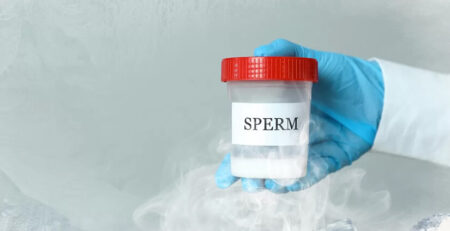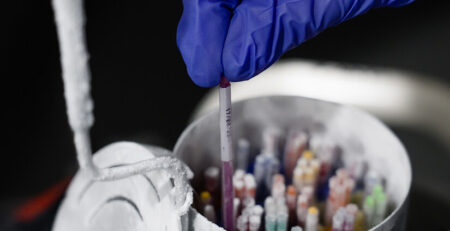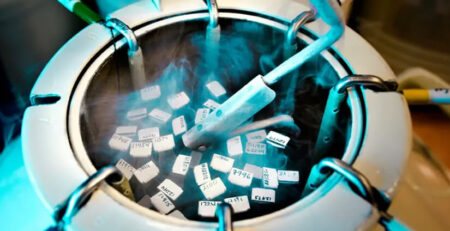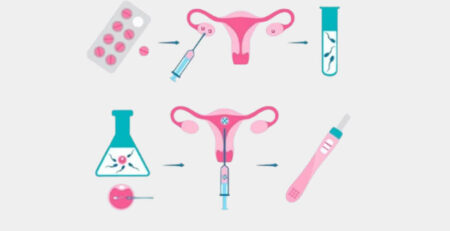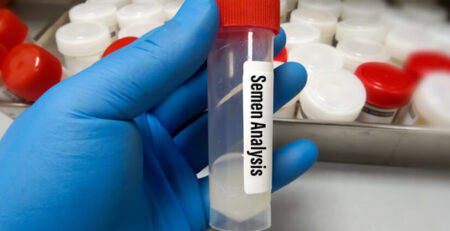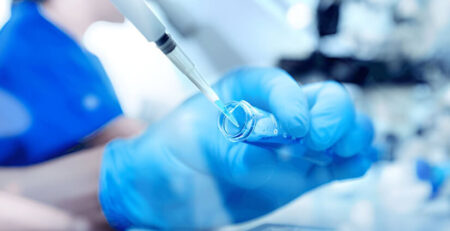Understanding Fertility Preservation with Excel IVF
Fertility preservation provides hope for those wishing to conceive later in life or facing treatments that may impair reproductive ability.
This guide offers a comprehensive overview of the field, covering who can benefit from it and detailing the various options and processes available at Excel IVF.
What is Fertility Preservation?
Fertility preservation involves saving or protecting eggs, sperm, embryos, or reproductive tissue, enabling individuals to have biological children in the future. This medical science is crucial for several reasons:
Cancer Patients: Treatments like chemotherapy or radiation can damage reproductive organs, making fertility preservation essential for maintaining the potential for future cancer patient family planning.
Family Planning: Individuals or couples not mentally or physically ready to start a family can preserve their reproductive material, allowing them to conceive later in life.
LGBTQ+ Couples: It offers opportunities for biological children later in life, providing options for transgender individuals or same-sex couples wishing to start families.
Fertility Preservation Options at Excel IVF
For Females
Egg Freezing (Oocyte Cryopreservation): The ovaries are stimulated with hormones to produce multiple eggs, which are then retrieved and frozen for future use. This option is suitable for women who want to delay conception or those facing medical treatments that may impair fertility.
Embryo Freezing: Fertilized eggs, or embryos, are frozen to be thawed and used in future pregnancy attempts. This option is ideal for women in committed relationships who wish to preserve their embryos for later use.
Ovarian Tissue Freezing: Ovarian tissue is surgically removed and frozen for potential re-implantation. This technique is beneficial for women undergoing treatments that may damage ovarian function or for pre pubertal girls with cancer, undergoing chemotherapy or radiotherapy allowing them to maintain the ability to conceive naturally
For Males
Sperm Freezing: Sperm is collected through a straightforward procedure and frozen for future use. This option is suitable for men who wish to preserve their reproductive material for later, either for family planning or medical reasons.
Testicular Tissue Freezing: Testicular tissue can be surgically removed and frozen for future procedures. This option is beneficial for men undergoing treatments that may impair sperm production.
The Need-Specific Fertility Preservation at Excel Hospital
The field of fertility preservation began with the freezing of surplus embryos during IVF cycles, and over time, the options have expanded. At Excel Hospital, we are proud to offer this hope in various forms according to the individual needs of our patients.
Semen Freezing: For individuals wanting to store sperm, semen is collected and frozen, providing an option for future conception, especially when two people are supposed to be away for a certain time.
Egg Freezing: Eggs are harvested through ovarian stimulation and retrieval and then frozen for future use. This option allows women to conceive later after they have dealt with certain life or health conditions.
Embryo Freezing: Embryos are created by fertilizing eggs, then frozen for future pregnancy attempts, making this option ideal for couples wishing to delay conception.
Testicular Tissue Freezing: Testicular tissue is surgically harvested and frozen, allowing for future use in assisted reproduction techniques.
Ovarian Tissue Freezing: Ovarian tissue is harvested surgically and can be re-implanted later, offering women the ability to conceive naturally.
How Fertility Preservation Works
The process includes several key steps:
Initial Consultation and Evaluation
The first step is to meet with a fertility specialist at Excel Hospital, who will assess your medical history, discuss your goals, and determine the appropriate options.
Evaluation For Females
AMH (Anti-Müllerian Hormone) Levels: This hormone is produced by ovarian follicles, and its levels help assess the ovarian reserve. Higher AMH levels generally indicate a higher reserve, while lower levels suggest fewer remaining follicles.
Ultrasound Scan: An ultrasound is performed to evaluate the size and number of antral follicles in the ovaries, which can indicate the current fertility potential. It also helps detect any abnormalities, such as ovarian cysts or fibroids.
Evaluation For Males
Semen Analysis: This analysis evaluates the sperm count, motility (movement), and morphology (shape). The analysis provides a comprehensive overview of the sperm’s viability for fertilization. The same sample can also be frozen for future use.
Embark on Your Journey to Parenthood - Just a Click Away
from Fulfilling Your Miracle Dream
The Procedures
For Females
Superovulation: To increase the number of eggs available for retrieval, hormone injections, including FSH (Follicle-Stimulating Hormone), are administered over several days to stimulate the ovaries to produce multiple mature eggs.
Monitoring: Throughout this process, multiple follicle scans are conducted to monitor the response to stimulation. These scans are usually vaginal for adult women, while abdominal scans may be used for younger girls.
Egg Retrieval: Once the follicles are ready, the patient undergoes an anesthesia procedure, and the eggs are retrieved using a thin needle inserted through the vaginal wall into the ovaries. This procedure is guided by ultrasound to ensure accuracy and minimize risk.
For Males
Semen Collection: Sperm is collected through a straightforward process, such as masturbation, and can then be frozen for future use.
Testicular Tissue Freezing: For men with limited sperm production or no sperm in the semen, testicular tissue can be surgically harvested and frozen. This tissue may later be used in assisted reproduction techniques, such as Intracytoplasmic Sperm Injection (ICSI), where individual sperm cells are injected into eggs.
Cost Considerations for Fertility Preservation
The cost of fertility preservation varies based on several factors:
Procedure Type: Different preservation procedures, such as sperm freezing, egg freezing, embryo freezing, or ovarian/testicular tissue freezing, come with varying costs.
Semen Freezing: $120 or ₹ 10,000
Egg freezing:$1700 or ₹ 1,40,000
Embryo Freezing: $1700 or ₹ 1,40,000
Testicular tissue Extraction: $ 300 or ₹ 25,000
Ovarian Tissue extraction/ Freezing: $1800 ₹ 1,50,000
Storage Fees: Ongoing storage fees can add to the overall cost, varying by clinic and storage duration (around $100 for semen freezing/ year, $500 for egg/ embryo per year)
Insurance Coverage: Coverage depends on individual insurance plans and state laws, especially for medical reasons like cancer treatments.
Additional Costs: Pre-procedure testing, consultations, and medications can add to the overall cost.
Financial Assistance: Government grants, sponsorship by non-profit organizations, or clinic payment plans may be available to help manage costs.
How to Prepare for Fertility Preservation
At Excel Hospital, we strongly recommend that our patients follow a healthy diet to prepare for fertility preservation. Adopting good dietary habits can help prepare for fertility preservation and support overall reproductive health.
Balanced Diet: A balanced diet rich in nutrients such as vitamins, minerals, and antioxidants can support reproductive health. For example:
- Vitamins: Folic acid, found in leafy greens and legumes, helps prevent neural tube defects in embryos. Vitamin D, from sources like fortified dairy products or sunlight, supports hormone balance and reproductive function.
- Minerals: Zinc, found in meat, seafood, and legumes, contributes to sperm quality and testosterone production in men. Iron from sources like red meat and spinach helps prevent anemia, which can affect ovarian function.
- Antioxidants: Antioxidants like vitamins C and E, found in fruits and vegetables, help reduce oxidative stress, which can damage reproductive cells and affect fertility.
Hydration: Staying hydrated supports bodily functions, including hormone regulation, and aids in maintaining healthy cervical mucus for women and healthy sperm motility for men.
Avoiding Harmful Substances: Reducing or eliminating caffeine, alcohol, and tobacco can improve reproductive health. For instance, high caffeine intake may negatively affect fertility, while smoking and excessive alcohol consumption can impair reproductive function and sperm quality.
Physical Activity: Indulging in physically stimulating and mentally calming activities such as Yoga, dancing, or walking is highly recommended while preparing for fertility preservation. These activities not only help to keep fit but also improve blood circulation to enhance the procedural outcome.
Understanding Risks and Complications
Like any other medical procedure, fertility preservation may involve certain risks, which are mitigated if you choose a highly recommended facility and an experienced fertility specialist. Let us understand some of the potential risks.
Hormone Stimulation Side Effects: The hormone injections used to stimulate superovulation can cause temporary side effects such as:
- Mood Swings: Hormonal changes can lead to emotional fluctuations.
- Abdominal Discomfort: Bloating, nausea, and cramping may occur due to ovarian stimulation.
Ovarian Hyperstimulation Syndrome (OHSS): In rare cases, excessive ovarian stimulation can cause fluid accumulation, which may lead to symptoms such as bloating, weight gain, and, in severe cases, blood clots or organ failure.
Infection: Egg retrieval and surgical procedures, such as testicular or ovarian tissue extraction, carry a risk of infection, as with any medical procedure. Proper aseptic techniques are used to minimize this risk.
Anesthesia Risks: General anesthesia, used during egg retrieval and tissue extraction, carries potential risks, including allergic reactions, respiratory issues, or adverse drug interactions.
Excel Hospital is fully equipped with expert fertility specialists and state-of-the-art equipment, ensuring comprehensive and safe fertility preservation.
Our team of specialists brings years of experience, guiding patients through each step of the process, from consultations and evaluations to procedures and aftercare. Advanced medical technology, including hormone stimulation monitoring, ultrasound-guided egg retrieval, and precise cryopreservation techniques, helps mitigate risks, ensuring successful outcomes.
With a commitment to safety and success, Excel Hospital provides a trusted path to fertility preservation.
FAQs
Fertility preservation involves saving or protecting eggs, sperm, or reproductive tissues to use them in the future to have biological children. This is crucial for cancer patients, those delaying parenthood, or LGBTQ+ individuals planning for future families.
Anyone considering delaying childbearing for medical, personal, or professional reasons should explore fertility preservation. This includes cancer patients, individuals facing surgeries that could impact fertility, transgender individuals before hormone therapy, and professionals focused on career goals.
The most common methods include egg freezing (oocyte cryopreservation), sperm freezing (sperm cryopreservation), embryo freezing (embryo cryopreservation), and ovarian tissue freezing. Each method has different protocols and suitability depending on individual circumstances.
Common risks include the side effects from hormone stimulation treatments required for egg or sperm retrieval, such as mood swings, abdominal pain, and the potential for ovarian hyperstimulation syndrome in women. Procedures involved also carry typical medical risks of infection or adverse reactions.
Costs can vary significantly based on the procedure, ranging from $ 250 (₹ 20000) for sperm freezing to $ 2500 (₹ 2,00,000) for egg or embryo freezing and storage. Coverage depends on personal insurance plans and possibly state laws; it’s crucial to consult with your insurance provider for detailed information.
The timing of fertility preservation varies. For women, egg or embryo freezing is usually done at specific times in the menstrual cycle. However for women undergoing cancer treatment, the process can be started on any day. Ovarian stimulation starts early in the cycle, followed by egg retrieval around days 12-14, depending on the response to hormonal injections. Ovarian or testicular tissue freezing can be performed when needed. For men, semen collection or testicular tissue freezing can be done at any time, though planning around medical treatments, such as cancer therapies, is crucial.
It usually takes around 12-14 days for the injections and egg retrieval process in total. During this period the response is checked by ultrasound 3-4 times, but injections can be self administered.

